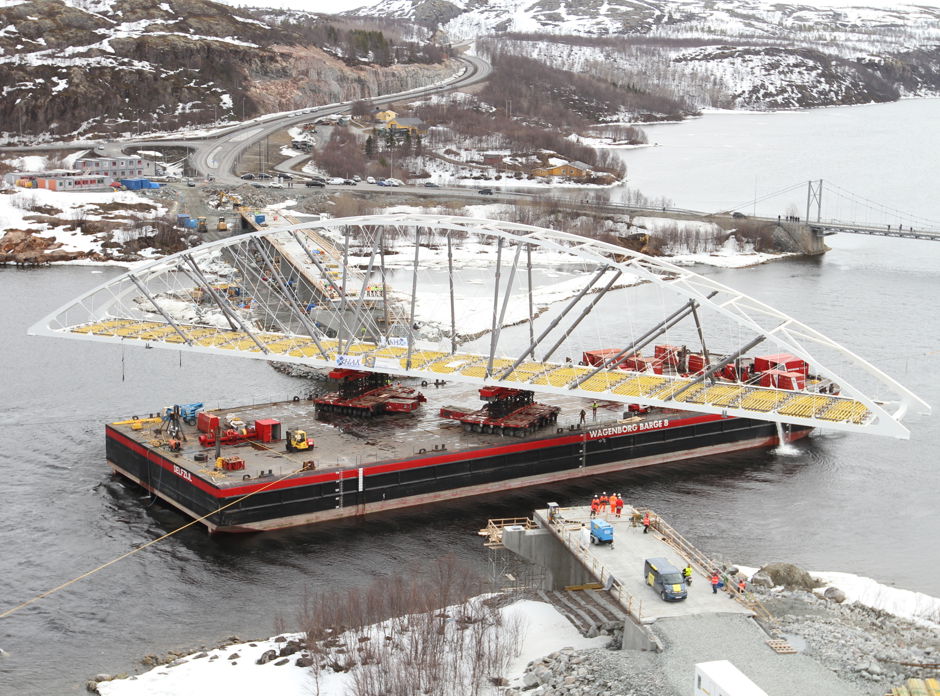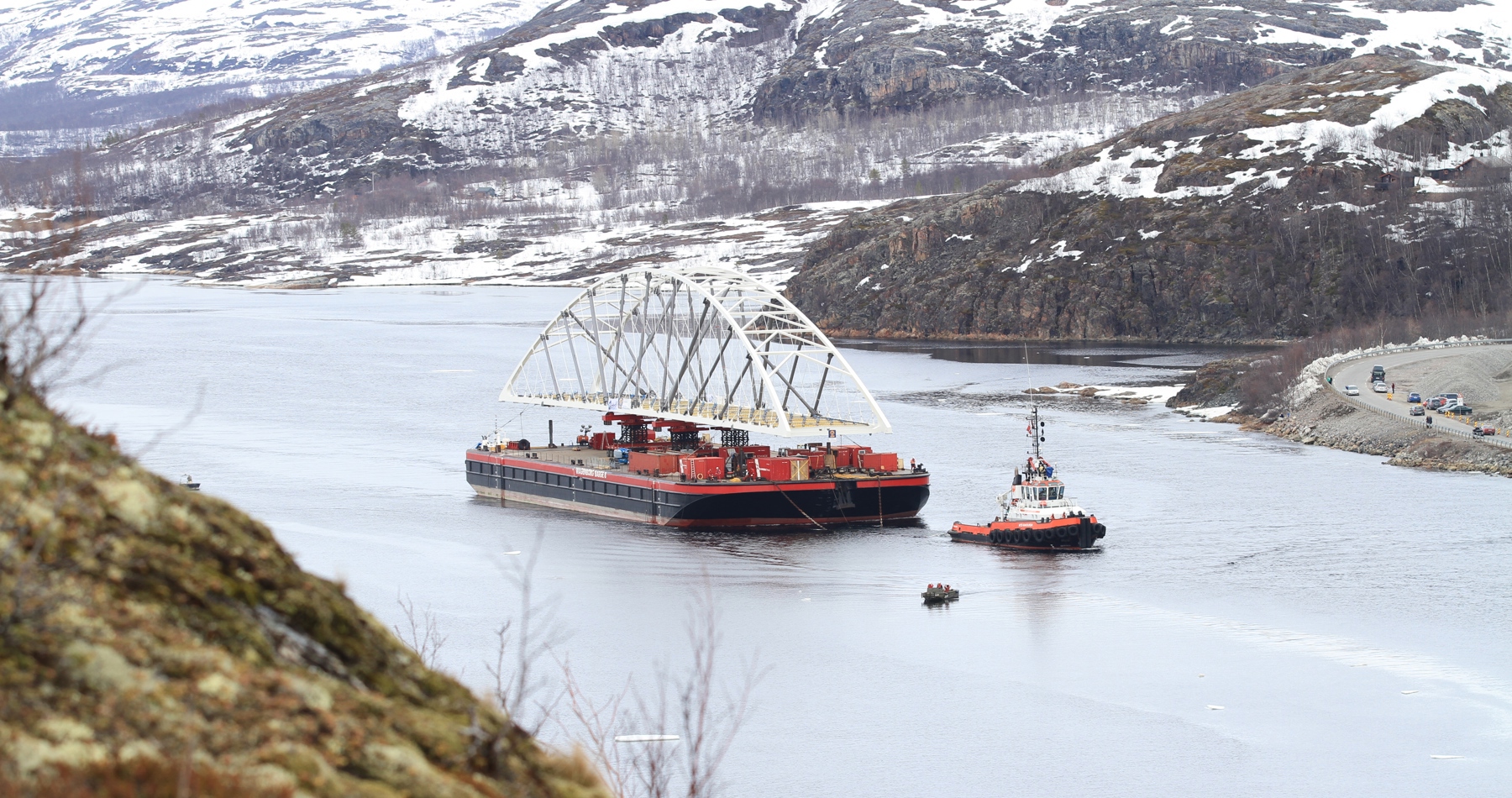
A gateway to the east
Kirkenes is ideally suited for observing the Northern Lights. Regardless of this draw, the Norwegian landmark feels like a final destination; end of the line for both roads and ferries. Yet Kirkenes, situated at a mere 10 kilometres from Russia, is known as the ‘gateway to the east’. Renovating the existing E105 targets the facilitation of trade and cooperation between neighbouring countries. Part of this upgrade is the construction of the Bøkfjord bridge; the 120 metre arched steel bridge spanning the Norwegian fjords, connecting Norway and Russia. A complex logistical challenge for Wagenborg to overcome.
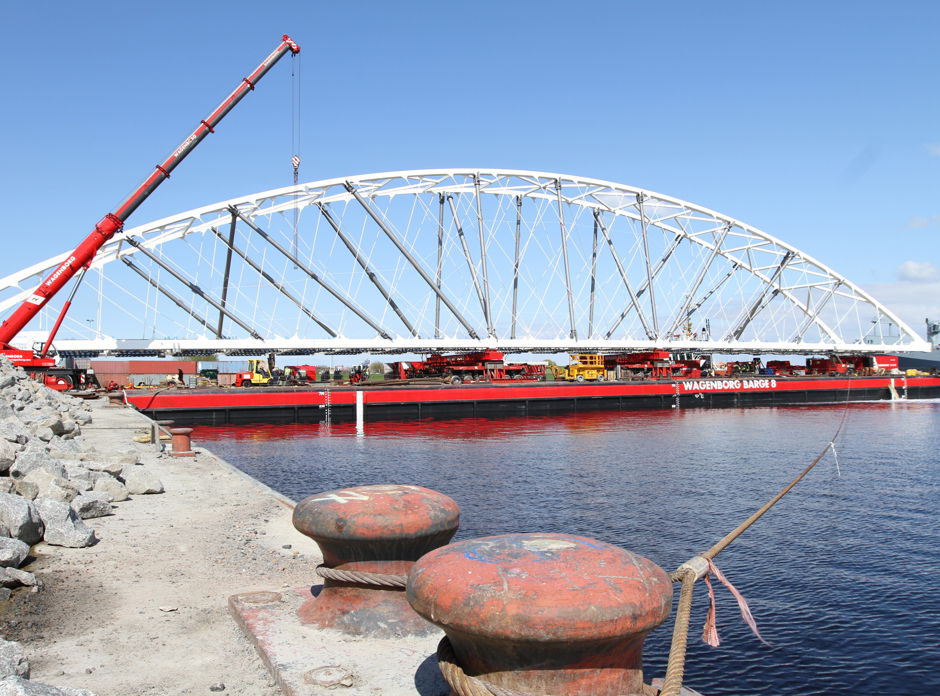
The moment of truth
In the vast snow-covered fjord landscape of Kirkenes the large steel arched structure immediately leaps out. Yet no further distinctions about the new Bøkfjord bridge seem to meet the eye. The bridge still resides on the Self Propelled Modular Trailers (SPMT’s) on the Wagenborg Barge 8. Slowly the pontoon manoeuvers towards the concrete pillars where the steel arched bridge of German manufacture is going to be situated. On board, men in overalls watch closely as the 120 metre long structure approaches the foundations; radiotelephones in hand to communicate every inch to their co-workers on shore. ‘This will be the moment of truth’, says director of Wagenborg Towage Marc Mazereeuw. ‘We have the tide on our side, and the SPMT’s have already turned the bridge 90 degrees. Our next step is to counter-weight the pontoon in order to slowly lower the bridge. This will go on record as a fine project for Wagenborg’.
1.500 miles by sea
Bøkfjord bridge’s steel construction was produced in segments at the factory of Schachtbau Nordhausen Stahlbau in the heart of central Germany. These segments were transported in parts by road to Wilhelmshaven, where final assemblage and welding took up several months. The steel-arched bridge is part of the new connection traversing Norway’s Bøkfjords, spanning a total of 284 meters. ‘The distance from Wilhelmshaven to Kirkenes amounts to about 1.500 miles’, Marc Mazereeuw elaborates. ‘It’s quite the voyage. To prevent the bridge from getting damaged no less than 100 additional tonnes of steel was used to anchor it to the pontoon’.
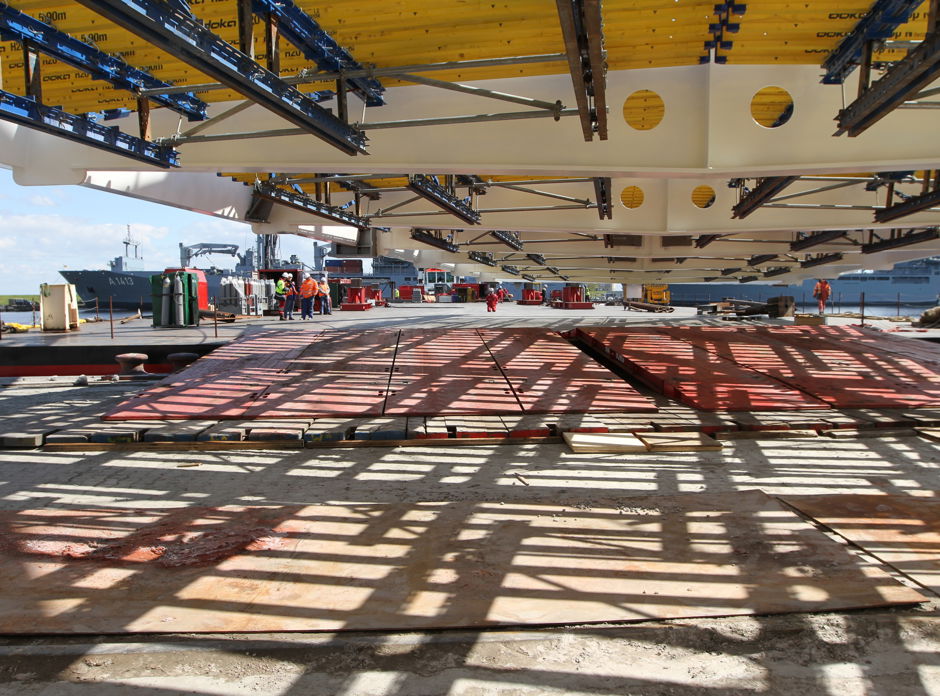
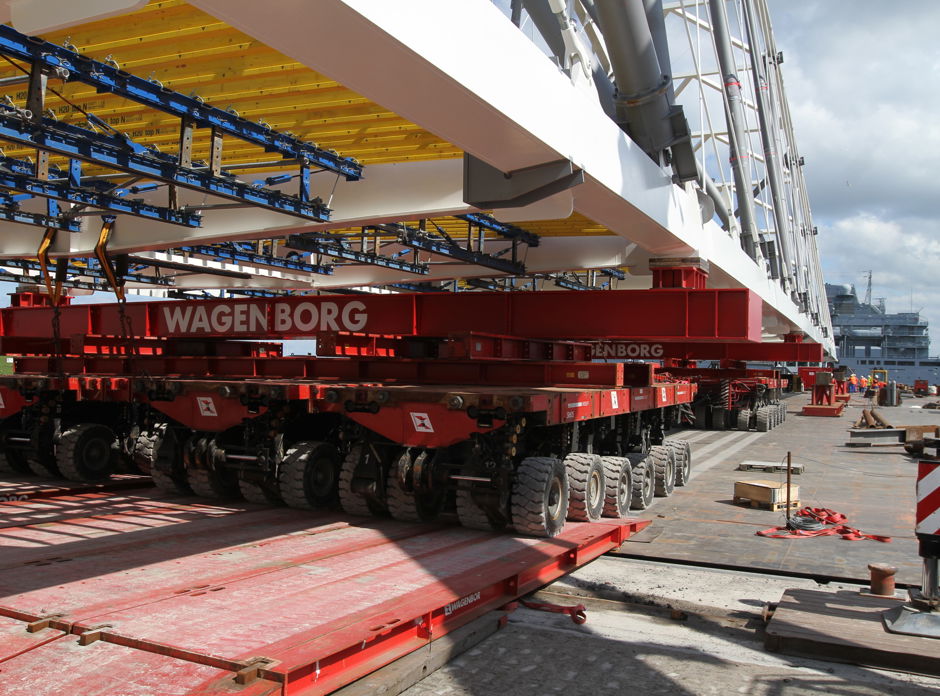
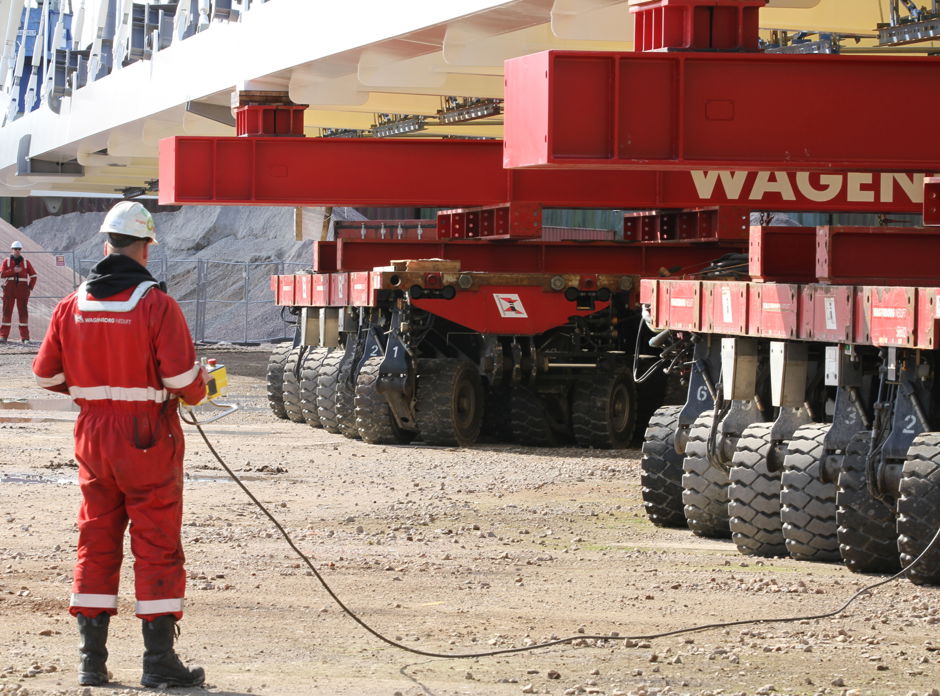
760 tons of steel
In Wilhelmshaven SPMT’s were used to transport the Bøkfjord bridge from the construction site onto the 100 metre long, 33 metre wide pontoon. The SPMT’s unique abilities makes them particularly suitable for this kind of heavy duty transport. ‘The wheels are able to perform a 360 turn and can rotate independent from one another’, Marc illustrates. ‘The SPMT’s have a maximum deadweight of 40 tonnes per axle and can be remotely controlled’. To load the Bøkfjord bridge Wagenborg used two sets of 24 axle lines. The SPMT’s were rigged with specially designed supporting beams carrying the bridge. With the SPMT’s, supporting beams, the bridge and the sea fastenings, the load carried by Wagenborg Barge 8 totalled to 1.300 tonnes of steel.
Smooth sailing
After securing the sea fasteners, the Wagenborg Barge 8 left Wilhemshaven early May by aid of tug boat ‘MTS Vanquish’ to begin the journey to Kirkenes in Norway. ‘Under the preferred meteorological circumstances, the journey would take about 10 to 12 days’, Marc recounts. ‘Halfway through our voyage we had to take shelter at the Lofoten Islands to by-pass bad weather conditions. Safety really is our first priority’.
Mid-May, the transport arrived safely at Kirkenes where the pontoon docked at the quay. The seafastening was removed and replaced with riverfastening for further transportation along the Pasvik river. Jacks were used to level the bridge in preparation of installation at the Bøkfjords.
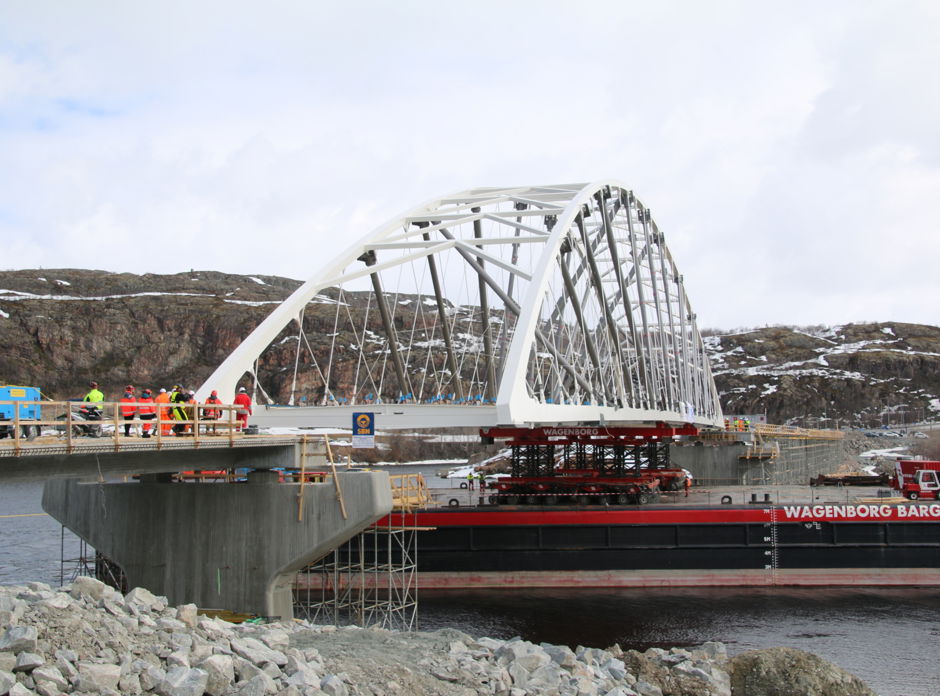
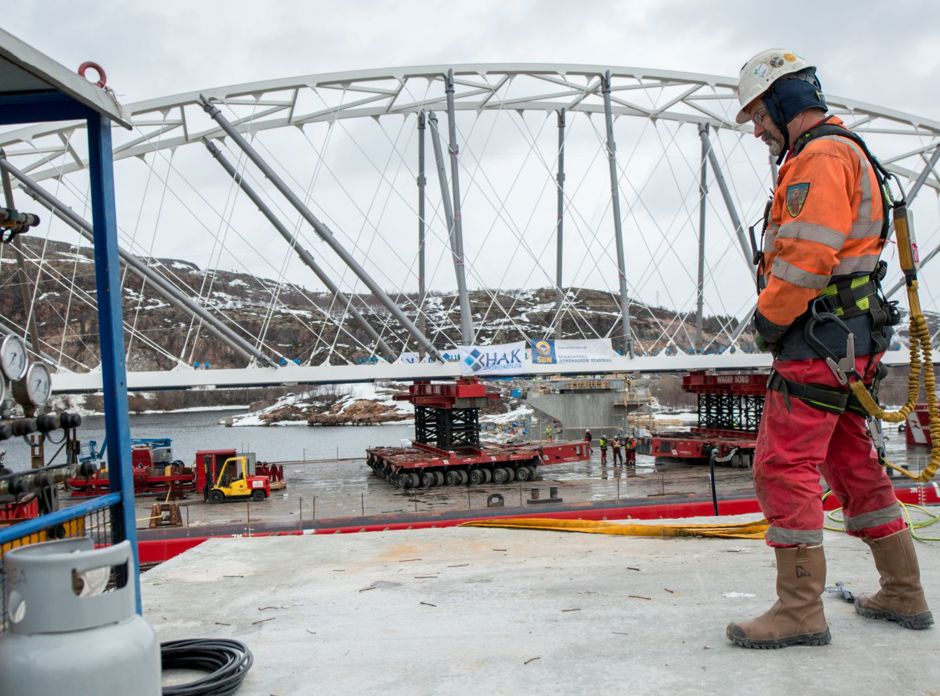
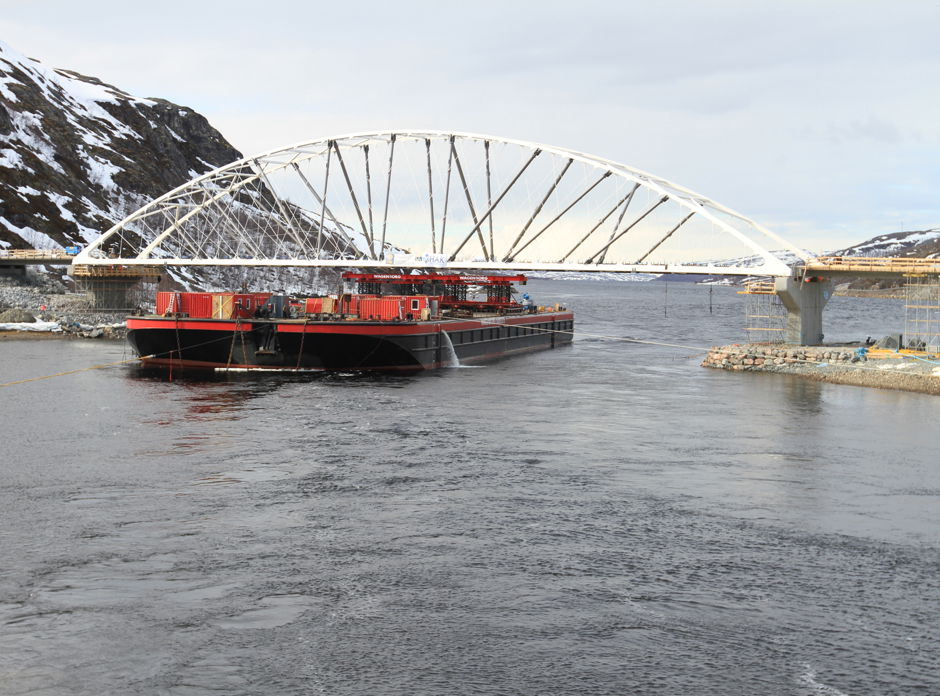
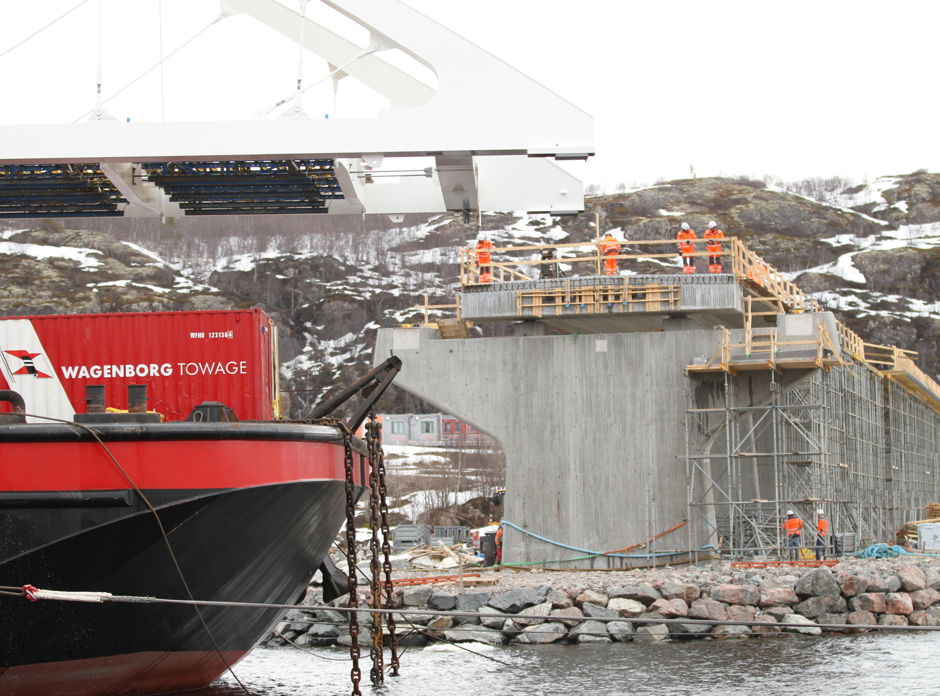
Installation
Assembling the bridge is divided into two stages that are both executed when the tide is in. Marc explains: ‘Yesterday we started by taking the Wagenborg Barge 8 five miles up the Pasvik river towards Elvenes where we docked the pontoon at the installation site’. Seeing that the Pasvik river is subject to current and tidal motion, the client worked with Wagenborg to have the Barge 8 outfi tted with special anchors. According to Marc: ‘Today we’ve hauled and roughly positioned the pontoon between both pillars. Just before the tide came in the bridge was then rotated 90 degrees by the SPMT’s, all while still residing on the pontoon. Subsequently, we used an 8-point mooring system to refine the pontoon’s position. Currently, we are lowering the bridge in place, on the one hand by ballasting the pontoon and on the other hand by using the outgoing tide’.
The new Bøkfjord bridge was cleared for traffic in the autumn of 2017 and is hereby in service.
